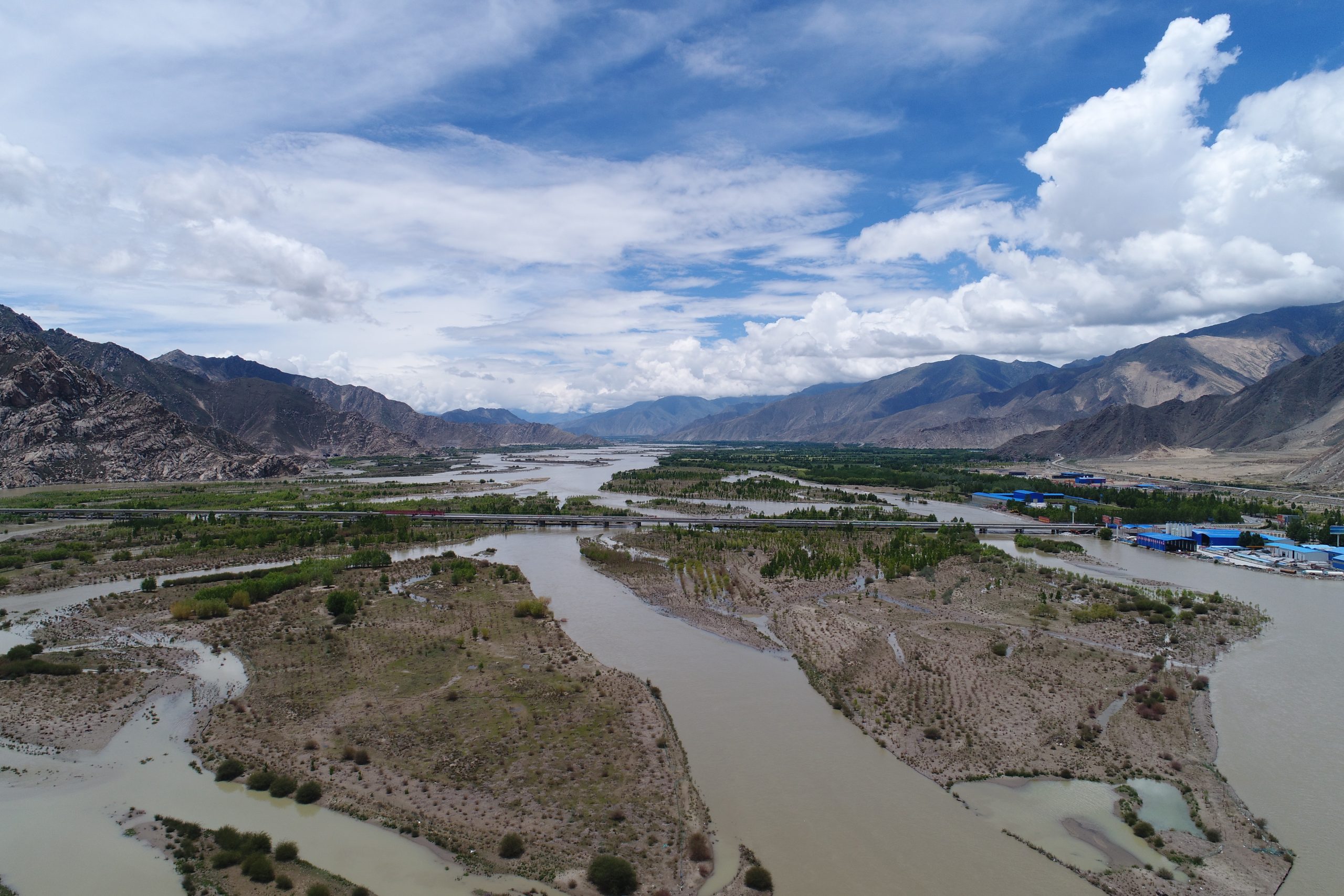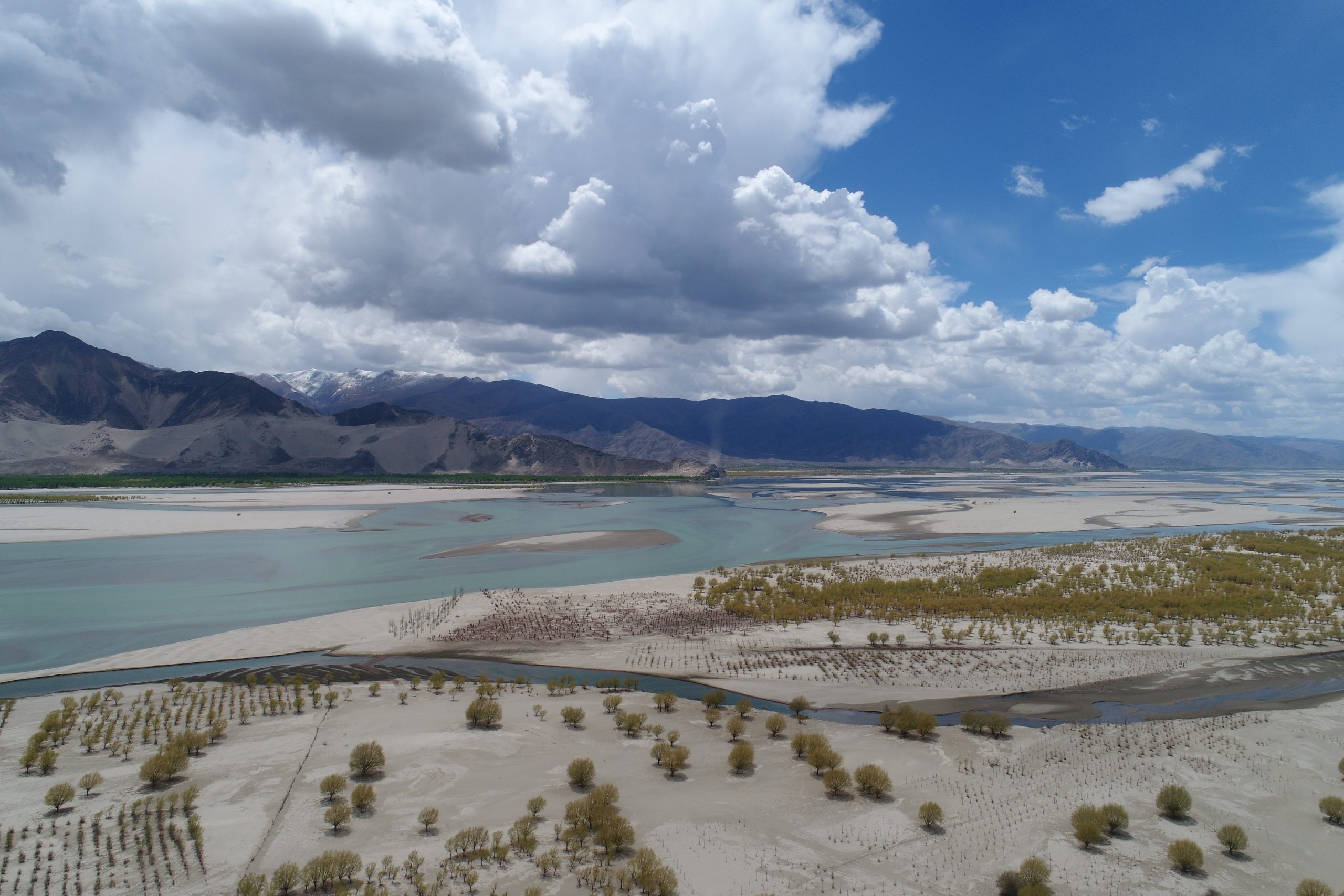Revealing morphological responses of braided rivers to human activities
Although overall the degree of human activities in the Qinghai-Tibet Plateau (QTP) is low, these activities have been intensified unevenly across the QTP. One of these sites is the downstream reach of the Lhasa River, a tributary of the Upper Yarlung Tsangpo River. In a recently completed project, we examined the compound effects of cascade dams and narrowed valley width due to sprawl of urban and agricultural lands on morphological structure of the downstream braided reach of the Lasa River (see details in You et al. (2021). We found that this braided reach experienced a short relaxation time from the altered channel morphology due to the impact of dam construction and the trajectories of morphological changes of different sub-reaches that have different degrees of human disturbance are similar. These findings have catalyzed a more fundamental scientific question: Do braided rivers in the QTP always recover from dam construction and other human interruptions with a short time period (a few years) and why? I believe answers for these questions will provide valuable scientific guidelines for assessing environmental impact on braided rivers over relatively short time periods (e.g., decades) not only in the QTP, but also those in other regions.
Human impact on braided rivers. Dam construction disturbing the Lhasa River (left); artificial planting on the middle Yarlung Tsangpo River (right)
 |  |
